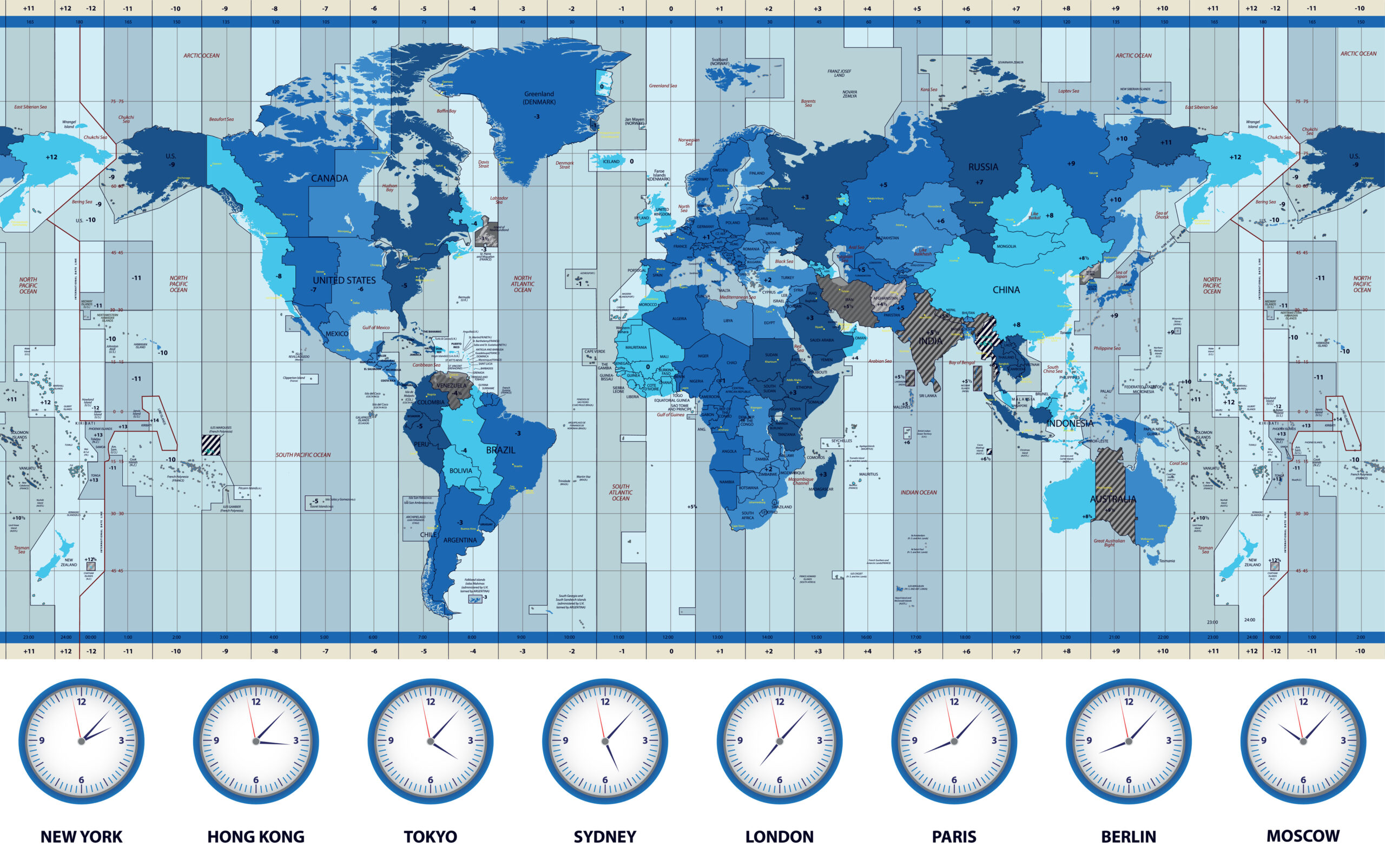Offshore Development Timezone Issues: 5 Debunked Myths
5 Myths to Debunk about Offshore Software Development Timezone Issues
Suppose that you have the perfect software product in mind, but you don’t have the in-house resources available to develop it, or you’re concerned about expenses. Instead, you’re considering working with an offshore provider, but are concerned about the challenges of teams working in different time zones. What do you do next?
The good news is that your worries about offshore timezone problems aren’t usually a reality. In this article, we’ll debunk some of the most common myths about offshore software development timezone obstacles, as well as some tips to handle time zone differences with offshore partners.
What are Offshore Software Development Timezones?

The practice of IT outsourcing involves working with an external partner on technology development projects. Within this field, however, there are a number of terms that describe different outsourcing situations.
The Difference Between Offshore, Nearshore, & OnShore
First, the term “onshore” describes working with an outsourcing partner who is located in the same country as you. As a result, the outsourcing partner’s timezone is usually not too different from your local time (although this is not always the case; for example, two companies located on the U.S. West and East Coasts have a 3-hour time difference).
On the other hand, the terms “nearshore” and “offshore” describe working with an outsourcing partner located in a different country. In offshore outsourcing, the partner is typically quite distant geographically, while in nearshore outsourcing, the company is relatively closer (for example, a U.S. business outsourcing to Mexico). As with onshore partnerships, nearshore outsourcing usually does not present many timezone obstacles.
Understanding Offshore Timezones
An offshore software development timezone is the timezone in which an offshore development team is located, as opposed to the timezone of the client. The time zone difference in software development can create problems with effective communication if not properly addressed.
Perhaps the most common type of offshore development occurs when clients in North America and Europe work with outsourcing partners in Asia. In this case, the gap between both companies’ working hours can be 6 to 12 hours.
5 Myths about Offshore Timezone Issues

1. Communicating with teams will be challenging
It’s easy for businesses to assume that communication with the outsourcing partner will suffer due to offshore timezone problems. However, with the right tools, a good team, and a strong action plan in place from the start, communication shouldn’t be an issue.
These days, there are so many communication channels for chatting and project management channels—from Slack and email to Jira and Asana—that teams can always be on the same page regarding what’s going on and what’s in the works. Before getting started, outsourcing clients and partners should agree on which methods they will use for both real-time and asynchronous communication.
2. Hiring internally will be easier
If you plan to hire internally and want someone to come into the office, this will place geographic restrictions on the people you can recruit and the skill sets they have to offer. What’s more, in this post-COVID era, your business likely already has some or all team members working remotely part-time or full-time.
Not only are internal hires more costly in the long run, but they also limit your talent pool—a particularly challenging issue in light of the continuing IT skills gap. Most companies will be better off outsourcing to expert software developers who have the necessary knowledge and experience at a much lower cost.
3. The business will need to fundamentally change
One persistent offshore development myth is that the business will need to reshape itself to deal with the timezone issues. The good news is that the best offshore providers typically have a contact person or leader located in your country to act as a liaison and oversee the project’s operations during regular business hours.
In addition, offshore development companies are often willing to work longer hours or change their schedule to accommodate the client. For example, teams at KMS in Vietnam will sometimes work at 9 or 10 p.m., which is 9 or 10 a.m. in the United States. This allows remote developers to be available for daily scrum meetings, calls, and other real-time contact.
4. Timezone issues result in language barriers
Time zone differences don’t automatically result in language differences as well. Many offshore providers have strong English skills that can enable even in-depth, sophisticated technical discussions.
At KMS, for example, our remote teams in Vietnam have some of the highest English proficiencies among developers across the globe. By interviewing a few different potential offshoring partners and vendors, you can get a feel for which ones have the strongest English skills.
5. The quality of work will suffer
Offshore providers can provide some of the highest-quality software development work without breaking the bank. According to Deloitte, 54 percent of companies are outsourcing one or more information technology projects.
Software developers’ quality of work has very little to do with their geographic location. In fact, offshore software development providers bring a wealth of expertise and knowledge in programming languages, technologies, agile methodology, and more.
Common Offshore Development Timezone Obstacles—and How to Overcome Them

1. Rushing to hire a partner
Don’t jump to work with the first offshore development partner you find. Instead, do your due diligence by researching different options to find a high-quality partner. Look at potential partners’ client reviews and success stories, and speak with team members if possible.
2. Not setting expectations from the beginning
Communication issues can potentially be a problem if both sides (the business and the offshore partner) are not on the same page. It’s your responsibility to define your business goals, requirements, and desired outcomes. Meanwhile, the offshore provider should define the project’s timeline, cost, and resource allocation.
3. Being unwilling to be flexible
Unexpected issues can and do crop up, even if you find the perfect offshore development partner. As with any software project, it’s important to understand that things happen that can throw off your expectations. Flexibility, patience, and teamwork are key for the best chance at success.
If you’re considering nearshore outsourcing as a viable option, particularly in regions like Mexico, read about the advantages of nearshore software development in Mexico. This blog offers insights into why Mexico might be the perfect choice for overcoming timezone and other outsourcing challenges.
KMS Technology: A Leading Offshore Software Development Company
KMS Technology is a leading offshore software development partner with more than 13 years in business. With more than 1,500 offshore team members in Vietnam, our software and technology experts have helped more than 250 clients build the software product of their dreams. Our services range from product development and testing to software assessments, DevOps, and more.
Want to learn how KMS can help with your next software development project? Get in touch with us today.








